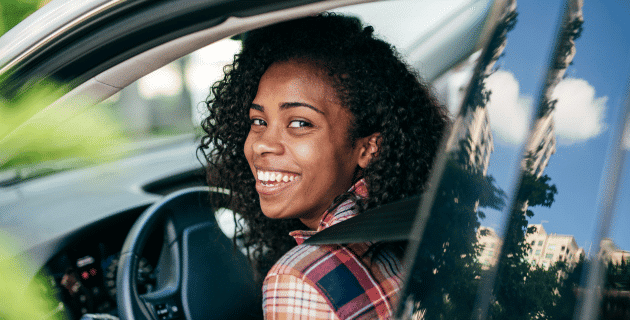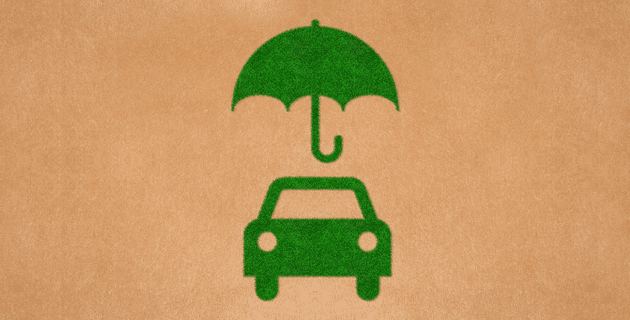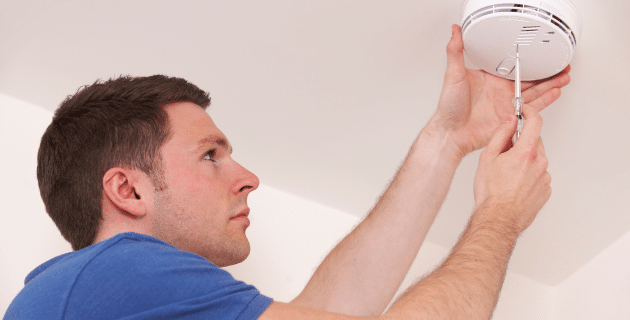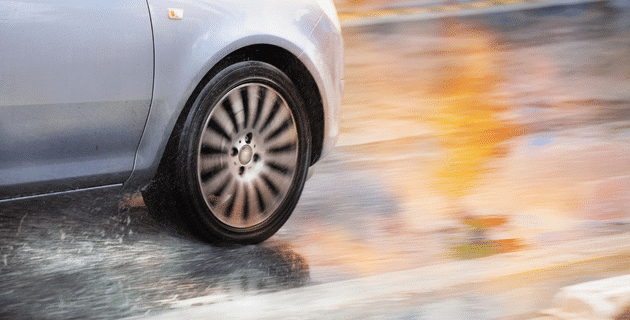
by California Casualty | Auto Insurance Info, Finances, Homeowners Insurance Info |
It may not seem like a big deal, but forgetting to make an auto or home insurance payment or having a lapse in coverage can have serious repercussions.
Let’s say you don’t drive that much anymore, so you miss an insurance payment or two, but then you get into an accident… If your premium goes unpaid, your insurance policy is void. Meaning, your insurance company is not obligated to rewrite your policy. You’ll be left without coverage and will likely have a higher rate when you do find a new carrier because the lapse has now left you labeled as “high risk”.
Your cancel notice gives you the date that payment must be received by, and if that date occurs with no payment, the system will automatically cancel your policy. Once you’re canceled, your carrier will not take you back unless they are required by law.
Let’s dive further into more facts and answer some questions every vehicle or homeowner should know about their coverage.
Home insurance is required if you have a mortgage.
While home insurance isn’t required by law, your lender will require you to be insured if you have a mortgage. Your policy will need to cover wind, hail, fire, and vandalism. The lender will be named as an additional insured. Should you file a claim for damage or loss, the insurance company will issue a two-party check naming you as the insured along with the mortgage company.
If you fail to pay your home insurance, you could have a lapse in coverage. Your policy will cancel, which is a violation of your mortgage agreement, and there will be no coverage in the event of a loss or claim. Also, the homeowner’s insurance is a package, which covers the home, other structures, your personal property, additional living expenses, and provides personal liability. You will lose all of that if the policy cancels.
Car insurance is required by law.
In every state except New Hampshire, you’re required to have car insurance. You have to have minimum coverage in case you get in an accident, though what you are required to carry does vary by state.
When you register your car, you submit proof of insurance. When you buy a car, you can’t leave the lot without signing up for insurance. It’s just along the way that you might accidentally, or on purpose, miss a payment and cause your insurance to lapse.
What is a lapse?
You pay for a specific time period on your insurance. It may be six months, a year, or another timeframe. In all cases, you will have a start date and an end date. As long as you are paying the bills on time, all is well.
If, however, you miss a payment, your coverage lapses. A lapse in coverage can be as short as one day or it can be much longer. Like other bills that you may be late in paying, there may be a grace period and a late fee. Unlike other services, however, you might face more severe consequences including government-mandated ones, if the lapse goes too long.
What happens when you drive without insurance?
If your insurance premium goes unpaid for long enough, your insurer will cancel your policy. Insurance helps with the financial responsibility if you get into an accident. Because it is usually required by law, there are additional consequences if you don’t have it. Here’s a summary of what you can expect if you let your insurance lapse.
-
- If you’re in an accident, you would be fully responsible for any damages or injuries.
- Depending upon the state where you live, you may be limited in the amount that you can sue the at-fault driver.
- Your insurance company may cancel your policy and alert the Division of Motor Vehicles.
- Your license and registration may be revoked, and you would be responsible for paying daily fines to the Division of Motor Vehicles. You may also have to pay a fine to reinstate your license and registration.
- Once you are reinsured, you may need to carry an SR-22 form with you for three years, showing proof that you have the minimum required insurance.
- You may have difficulty getting insurance again, as you’re now considered a risk. If you do get insurance, your insurer can raise your rates. Drivers with a coverage lapse of 30 days or more saw an average premium increase of 35%.
- Your car could be repossessed if it is leased or if you are paying a loan.
- Your credit score may drop, which can affect your ability to get a loan or credit card. The lapse will remain on your credit report for up to 7 years.
What happens if your home insurance is canceled?
If you lapse in payments for your home insurance, and as a result, your policy is canceled, your mortgage lender will be informed in writing.
-
- Your lender can force you into a more expensive policy, called forced-placed insurance. This insurance only covers the loan amount for the mortgage company. There is no coverage for your belongings or personal liability. Therefore, if the house costs more to rebuild than the remaining loan amount, it won’t be covered.
- If you don’t agree to the insurance, your lender can send your loan into default. This presents a risk of losing your home to foreclosure.
- Your credit score will drop as a result.
- Without insurance, whether or not you have a mortgage, you are responsible for 100% of the costs for any damage to your home if something unexpected happens.
What should you do if you have a lapse in coverage?
-
- Once you realize your policy has been canceled or you’ve missed a payment call your insurance company and see what can be done.
- Find out if they are able to rewrite your policy. Pay whatever fines are needed. Many companies may charge extra or interest fees on the remaining balance but California Casualty only charges a small monthly fee.
- If you cancel over a certain number of days, you will be looked at as a brand-new customer and have to meet all underwriting guidelines. You may lose certain discounts or benefits for customer loyalty.
- If you’re unable to make your insurance payment, let your insurer know. They may be able to adjust the policy to lower your cost.
- Your insurer may deny you coverage. In that case, you will need to shop around for a new policy. Be honest with the new company. They will be able to check to see if your coverage has lapsed in the past. Be prepared to pay a higher premium because of it.
- After you get insurance again, contact your state’s Division of Motor Vehicles to update your insurance information. Make sure that your registration and license are still valid.
- Similarly, update your mortgage lender if your home insurance has been affected.
- If you’ve changed insurance companies, and you owe your old insurance company any money, make sure to pay it. They will likely pass it along to a debt collection agency if you do not.
How can you prevent a lapse?
The best way to avoid any lapse in coverage is to set up a system so you will pay your premium
on time.
-
- Pay the premium in full if you are able to do so. Consider using your credit card for your annual insurance payment to get extra credit card award points. There is a cost savings and convenience of paying in full with most policies. At California Casualty, if the state allows, both auto and home policies offer this type of savings.
- Set up automatic payments such as an EFT from your checking account or a payroll deduction, if offered or available.
- Set a reminder on your phone or calendar for your premium due date.
- Make sure you know the end date of your policy. From 30-60 days prior to the renewal, California Casualty sends out a renewal policy for the insured to review. Schedule a time with an agent to review your policy to see if you need any updates before the renewal takes place.
- If you switch insurance companies, make sure to time the start date of your new policy with the end date of your old policy so there is no lapse.
- Talk to your insurer about options if you are not driving for an extended period of time. For example, you may be deployed overseas. You still may want coverage since your car would remain at risk for damage due to weather or vandalism, and it could be stolen. However, you can suspend coverage for a time period, including while you are deployed or on sabbatical. This may not be an option if your car is leased or you’re paying off a loan.
This article is furnished by California Casualty, providing auto and home insurance to educators, law enforcement officers, firefighters, and nurses. Get a quote at 1.866.704.8614 or www.calcas.com.

by California Casualty | Auto Insurance Info |
Maybe you work from home or you live close to work. Perhaps you regularly use rideshare services or public transportation. As a result, you drive less than most people. If that’s the case, you may qualify for the lower rates.
Your annual mileage is a factor in determining your insurance rate. After all, if you drive less often, you have a reduced chance of getting into an accident. There’s also less wear and tear on your car so it stays in better shape. That’s why insurance companies offer discounts for low-mileage drivers.
Low Mileage Discounts
The average American drives about 13,476 miles a year or 37 miles a day. Low mileage insurance policies generally apply to those who drive about half of that amount or less. Each insurer sets its low mileage number so check with your insurance company to see if you qualify.
Your premium may be reduced by a percentage because you are a low-mileage driver, but how do they get this information if you don’t tell them? Your insurer may order reports from a third-party verified mileage program to get your annual mileage data. That data will be used when renewing your policy to make sure the insurer is using the most accurate vehicle information.
Low mileage discounts are automatic. When the mileage is determined, the rate factor (which can result in a decrease or increase) is automatically applied.
How to Reduce Your Mileage
You may be able to reduce your mileage to qualify for a low mileage discount. Here’s how.
-
- Start by calculating your mileage. Write down the odometer reading at the beginning of the week with the date. Then, check it after one week to find out how many miles you traveled. Multiply that number by 52 to get an estimate of about how much you drive a year.
-
- Commuting to work is the number one way that people rack up miles. If you do have a commute, investigate the ways that you can reduce the miles you drive. Try carpooling with a colleague. See if public transportation is available. Ask your employer if you’re able to work from home for a portion of your time.
-
- Plan ahead when doing errands. Map out where you need to be and group your stops. If your grocery store is on your way home from work, for example, plan to stop en route rather than making an extra trip. Pro Tip: Choose free or low-cost home delivery services to avoid the time on the road altogether.
-
- Walk or bike when you can, instead of driving. It gives you the benefit of great exercise in addition to saving on your car’s mileage. Just make sure to brush up on bicycle safety. Pro Tip: Use bike-share programs if your area offers them to save on the cost of a bicycle.
-
- If your family has two cars, try using one for daily driving and the other for leisure. In this way, you may qualify for a low mileage policy on the vehicle used less often.
Your car is one of your greatest investments. Keep it well-maintained and protect it with the right insurance.
This article is furnished by California Casualty, providing auto and home insurance to educators, law enforcement officers, firefighters, and nurses. Get a quote at 1.866.704.8614 or www.calcas.com.

by California Casualty | Auto Insurance Info |
You don’t have to wait for your auto policy to expire to change insurance companies. However, you do need to make sure you’re fully covered without any gaps in insurance. We’ve compiled some guidelines to help you decide if a change is right for you.
When should you think about changing policies?
While you don’t need a reason to change your auto insurance, there are some times when it makes sense for you to revisit your policy—even if you don’t change insurance companies. You may end up modifying your current policy to meet your evolving needs. For example:
• If you’ve had a major life change, such as getting married or divorced, you may need more or less insurance.
• If you’ve moved to a new zip code or state, the new location could affect your premium.
• If you’ve become a homeowner, you can bundle your auto and home and save money.
• If you’ve gone from working out of the home to remote work, your annual mileage may be less.
• If you’ve bought a new car, you will want to check insurance policy options.
• If your teenager is about to get his or her license, that will add to your policy.
• If your credit score has improved, you may qualify for a lower rate.
• If you’re unhappy with your current insurer, you can consider a change.
• If you’re approaching your renewal date, you can terminate a contract without cancellation fees.
Follow these steps to make the change.
Step 1: Consider your coverage options.
Figure out how much coverage you need. If you depend upon your care, you want to make sure that you have enough to replace it if necessary. Also, check your state laws. Some states will require you to have certain car insurance. If you lease or finance a car, your lender or lessor will require you to purchase collision and comprehensive insurance.
Step 2: Compare quotes from multiple insurers.
Get quotes from several insurers, and make sure you are comparing the same coverage, limits, and deductibles. Sometimes policies are cheaper because they don’t have the same coverage. This is also a good time to contact your current insurer to find out about discounts, or other ways to lower your cost. California Casualty offers discounts to nurses, educators, and first responders.
Step 3: Check for penalties and perks.
If you’re in the middle of your policy contract, there may be a penalty for canceling. Make sure you figure that into the decision to switch. You also will want to look for the perks, or little extras, that are offered. Some insurers offer inexpensive roadside assistance or accident forgiveness for qualified customers. Some have smartphone apps or are available 24/7 online.
Step 4: Do your research.
You want to know how your new insurer handles claims, and whether they have a good customer service rating. It may not be worth a lower price if it’s going to be a hassle dealing with the new company. Check out your insurer with the Better Business Bureau, JD Power, or the National Association of Insurance Commissioners.
Step 5: Make sure there’s no gap in coverage.
Car insurance lapses can be expensive, especially if you have an accident on the day in between. If you cancel one policy, make sure the other one is already in place. Your new insurance company can provide proof of insurance to your old company. However, they cannot cancel your policy. You need to do so. You’ll receive a refund for any unused portion. There may be a cancellation fee.
Pro Tip: Also remember to cancel automatic payments to your old insurer with your bank or credit card.
Step 6: Notify your insurer and lender.
Make sure to officially cancel your policy with your old insurer. Otherwise, your insurer will think you simply stopped paying your bill, and you could be liable for charges. Some insurers require 24 hours before canceling, so make sure you are aware of the terms. Also let your lender or lessor know about your new insurance if you are leasing or financing your car.
Step 7: Replace your insurance ID.
Once you make the change, ask for a digital copy of your insurance card. You can also order a printed card. Remember to place your new insurance card in your car’s glovebox.
Finally, if you have an open claim, wait to make a change.
You may not be able to change insurers if you have an open claim with your current insurance company. The claim has to be paid and closed. Also, the rate quoted from your new insurance company may not take into account that most recent claim. If that’s the case, you could have a big increase when you renew with the new company, or even be responsible for a retroactive fee.
Get started with a free quote today at mycalcas.com/quote.
This article is furnished by California Casualty, providing auto and home insurance to educators, law enforcement officers, firefighters, and nurses. Get a quote at 1.866.704.8614 or www.calcas.com.

by California Casualty | Helpful Tips, Homeowners Insurance Info, Safety |
If you’ve ever accidentally set off the smoke alarm, you know how loud it can be. But that loud beeping is actually a good thing. Smoke detectors give us that important warning to get safely away in case of a fire. Some detectors do double duty and also alert to carbon monoxide.
However, don’t assume your smoke detectors are working if you’ve installed them once and then never touched them again. Batteries wear out, and detectors have a lifespan of only about 10 years. That’s why it’s important to test yours regularly and there is no better time than when you are spring cleaning.
Two types of detectors
You may have a battery-powered smoke detector or yours may be hard-wired. They look the same from the outside but they’re a little different.
-
- A hard-wired detector is connected to your home’s electrical power with a cable that runs behind your wall or ceiling. They usually have a battery backup in case the power goes out. It is recommended that these detectors are installed by a professional electrician.
-
- The battery-powered detector snaps into a plastic base that is screwed onto the ceiling or wall. In many newer models, batteries are non-removable and come with a 10-year warranty.
Follow these steps
Both types of smoke detectors have a test button that allows you to check if they are working. Test your smoke detectors at least twice a year, once in the spring and once in the fall, and replace them as needed.
Step 1: Let family members know you’ll be testing.
A smoke alarm could cause family members to think there is a real emergency, so let them know that you are going to run a test. Since the sound could frighten small children and pets, you may want to test while they are not around. In addition, if your smoke detector is connected to an alarm company, notify them or you could have the fire department show up at your door.
Step 2: Position someone away from the detector.
Ask a family member or friend to stand on another level of the house, to make sure the alarm is heard. You want to make sure that the warning is heard downstairs in the basement and upstairs, in case someone might be there when it sounds.
Step 3: Press and hold the test button.
You may need to stand on a chair or a ladder to reach the button on your detector. You can use a broom handle if you are able to reach it that way. Note that it may take a few seconds to start. You will hear a loud siren. If there is no sound or a weak one, the batteries and/or the detector need replacement. Make sure to repeat this test with every smoke detector in the house or apartment.
Pro Tip: Some smoke detectors can go into programming mode if you hold the button too long. Wait for the detector to return to normal before testing it.
Step 4: Try this way to check your detector’s sensor.
The test button checks that your detector is powered. However, it doesn’t check the smoke sensor. You can do so with an aerosol spray that you can purchase for a few dollars at a hardware store. Follow the directions on the can to spray the “smoke.” This is a safer way to check the sensor than lighting matches. After the test, you can use a handheld vacuum to remove the material from the detector.
Pro Tip: Some detectors have a button to push to stop the alarm. Find out if yours has one before you run this test.
Other important tips
-
- If you have a detector where you have to change the batteries, you should replace them twice a year. (When we change the clocks is a great time to do that.) If your smoke detector is older than 10 years, you should replace it even if it is working.
-
- Dust and dirt build-up can affect your detector. Keep your detectors clean.
-
- Don’t paint your detector to match your décor. That can interfere with their ability to detect smoke.
-
- Make sure you have enough detectors in your home or apartment. You should have one in your kitchen, but 10 feet away from cooking to avoid false alarms. You also will want to place them inside every bedroom and outside each sleeping area, on every level of your home, and in places where you keep flammable substances like the garage.
You want to be fully prepared in case of a fire, and not just with smoke detectors. Talk with your insurer about your home and property to ensure that you are fully covered.
This article is furnished by California Casualty, providing auto and home insurance to educators, law enforcement officers, firefighters, and nurses. Get a quote at 1.866.704.8614 or www.calcas.com.

by California Casualty | Auto Insurance Info, Safety |
There are few things scarier than losing control of your car, but when it’s wet outside it can happen in an instant, no matter how safely you drive. This phenomenon is known as hydroplaning and it’s common during spring storms.
Here are some ways to reduce your chance of hydroplaning when you’re behind the wheel, and how to keep your car under control if you do.
What is hydroplaning?
Hydroplaning happens when your tires encounter more water than they can scatter. As a result, your tires lift up off the road and start riding on a layer of water. You lose traction, braking, and steering as your car skids and slides all over. It’s easy to crash. The more water there is, the more chance you might hydroplane. However, hydroplaning also can occur when roads are just slightly wet. The first 10 minutes of a light rain can be dangerous as water mixes with the oil residue and creates a slippery road surface.
Knowing what causes hydroplaning can help you take steps to avoid it. Hydroplaning is caused by a combination of three things:
-
- Wet conditions
- Your speed
- The condition of your tires
How to lower your chances of hydroplaning
1. Reduce your speed.
Hydroplaning is more likely to happen when you’re traveling faster than 35 mph. Plan your travels in the rain so that you can move more slowly. Also avoid sudden increases in speed, such as when passing cars. Those increases can cause your car to hydroplane.
2. Choose high-quality tires.
Your tires are your car’s first defense against hydroplaning. The tread or grooves are designed to push water aside. Make sure you invest in high-quality tires. Replace them when the tire tread has worn down. Driving on bald tires is especially dangerous in wet conditions.
3. Keep your tires well-maintained.
Make sure to rotate and balance your tires to help the tread wear evenly. Rotate the tires every other time you do an oil change, about every 7-10,000 miles. Also, make sure to keep your tires properly inflated.
4. Avoid puddles and standing water.
Spring storms can create puddles and standing water. If you see them, try not to drive through them. Also, avoid driving in the outer lanes where water tends to accumulate. Follow the tire tracks of the vehicle in front of you. Their tires already did some of the work of displacing the water. Just don’t follow too closely in case you have to slow down or stop unexpectedly.
5. Avoid hard braking and sharp or quick turns.
Sudden quick movements can cause hydroplaning. If you have to turn, take it slowly. Avoid any type of sudden braking. Stay in your lane.
6. Don’t use cruise control in the rain.
You’ll have to react immediately if you start to hydroplane. You don’t want to take extra time to disengage cruise control. In the moment, every second counts.
If you hydroplane, here’s what to do.
-
- Take your foot off the gas. This will help to slow you down.
-
- Do not slam on the brakes. That may be your natural instinct, but slamming on the brakes can cause your car to skid further out of control. If you need to brake, use a light pumping motion.
-
- Gently steer in the direction your car is sliding. This will help your tires realign and allow you to gain control of the steering.
-
- When you feel the tires reconnect with the road surface, take control of the steering. You’re now good to proceed on your journey. You may want to pull over to a safe spot to regroup and calm down before going on.
Accidents can happen. Make sure that your vehicle is fully covered for added peace of mind.
Safe travels.
This article is furnished by California Casualty, providing auto and home insurance to educators, law enforcement officers, firefighters, and nurses. Get a quote at 1.866.704.8614 or www.calcas.com.





